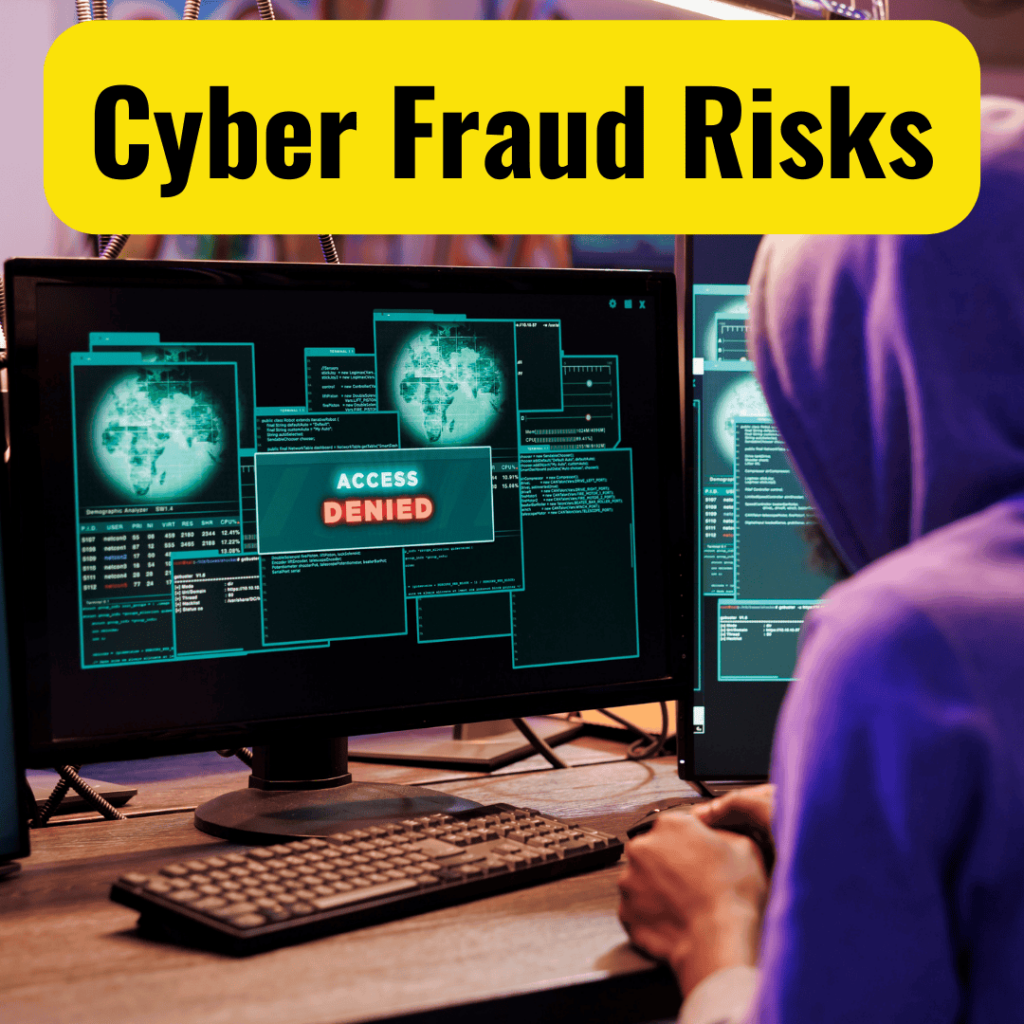
The digital transformation of our world has been truly remarkable, especially with the rise of cyber fraud in parallel to it. Since the demonetization drive in 2016 and the acceleration caused by the COVID-19 pandemic, digital transactions have become an essential part of our daily lives. From purchasing train tickets to paying for groceries or even transactions with small roadside vendors, digital payments have swiftly replaced physical currency—introducing new opportunities but also increasing the risk of cyber fraud in ways once unimaginable.
With just a smartphone and an internet connection, individuals can effortlessly conduct financial transactions, pay bills, transfer funds, and even invest in financial markets—all from the comfort of their homes. The speed and convenience that digital financial platforms offer have made life easier for millions of people. However, with great convenience comes significant risk. The very ease of these digital transactions has given cybercriminals the perfect opportunity to exploit unsuspecting individuals through fraudulent schemes.
Let’s dive deep into the world of digital deception, how cybercriminals operate, and, most importantly, how you can safeguard yourself against them.
Table of Contents
The Rising Threat of Cyber Fraud
Cybercriminals have evolved with the times, employing sophisticated methods to deceive users and siphon off their hard-earned money. Unlike traditional thefts, which require physical access, cyber fraud can be executed remotely from anywhere in the world. This makes tracking down the perpetrators and bringing them to justice an incredibly challenging task.
According to a recent survey, online financial frauds accounted for 77% of all cybercrimes in India over the past three years. A deeper breakdown of these statistics reveals that:
- UPI frauds constitute 47% of total cases.
- Debit card, credit card, and SIM swap frauds contribute to 11%.
- Internet banking frauds make up 9% of cyber fraud cases.

In FY24 alone, financial frauds involving amounts of ₹1 lakh or more per case resulted in losses amounting to ₹2,715 crore. Tamil Nadu topped the list with 6,468 cases totalling ₹663.63 crore, followed by Maharashtra and Karnataka.
Cybercriminals are evolving, using advanced techniques to deceive victims. Understanding their methods is crucial, but preventing yourself from falling victim is even more important. Let’s explore some of the most common tactics used by fraudsters.
Common Cyber Fraud Techniques and How to Avoid Them
Cybercriminals continuously adapt their methods, developing new strategies to deceive individuals. Below are some of the most common fraudulent techniques and how you can protect yourself against them:
1. OTP Fraud: The Most Common Trick in the Book
One-Time Passwords (OTPs) serve as a crucial security layer in digital transactions. However, scammers have found ways to manipulate users into revealing their OTPs.
How It Works: Fraudsters call victims, pretending to be bank representatives or officials from other trusted organizations. They claim that your account needs urgent verification, your card is about to expire, or your KYC update is pending. Then, they ask for your One-Time Password (OTP), which is required for secure transactions.
Example: A user received a call from someone claiming to be a bank official. The fraudster warned that the user’s debit card would be deactivated unless it was updated. Trusting the caller, the victim shared the OTP and lost money instantly.
How to Protect Yourself: Never share OTPs with anyone, no matter who they claim to be. Banks and financial institutions will never ask for OTPs over calls or messages. If in doubt, contact your bank directly through official channels.
2. Malicious App Installation
How It Works: Fraudsters trick users into installing malicious apps, often disguised as screen-sharing applications. Once installed, these apps can monitor your activity, steal OTPs, and even execute transactions without your knowledge.
Example: A man from Madhya Pradesh lost ₹1 lakh after unknowingly installing an app that enabled fraudsters to access his phone and delete OTP messages before he could see them.
How to Protect Yourself: Avoid installing apps from unverified sources. Do not download any app upon request from an unknown caller. Regularly update your phone’s security settings and revoke permissions for suspicious apps.
3. Fake Links and Phishing Calls Posing as Authorities

In this scam, fraudsters impersonate police officers, government officials, or even tax authorities and call individuals, informing them of fabricated legal cases against them. They pressure victims into sharing bank details, Aadhaar numbers, or even paying hefty “penalties” to avoid legal trouble.
How It Works: Victims receive messages or emails prompting them to update their KYC details or claim a reward. Clicking on the link takes them to a fake website that looks like a real bank or service provider’s page. Once they enter their credentials, fraudsters gain access to their bank accounts.
Example: A user received a message saying they had won a smartphone and needed to fill out a form to claim it. They entered their bank details and personal information, leading to unauthorized transactions.
How to Protect Yourself: Always verify links before clicking. Look for signs like unusual URLs or spelling mistakes. Do not enter personal details on unverified websites. When in doubt, visit the official website of the bank/service provider instead of clicking on links. Never make payments based on threats or urgency. Government agencies do not demand sensitive information over calls. Always verify the authenticity of such calls by contacting the respective authority directly.
4. QR Code Scams: The Trap of Convenience
How it Works: Scammers send users QR codes, claiming they need to scan them to receive payments. In reality, scanning the code actually authorizes a withdrawal from the victim’s account instead of a deposit.
How to Protect Yourself: Never scan QR codes to receive money. Remember that QR codes are used to send money, not receive it. Always verify the sender before scanning any QR code. Use secured payment methods that don’t require QR code transactions for receiving funds.
5. Emergency Scam Calls from Fake Relatives or Friends
How It Works: A scammer pretends to be a friend or relative in distress, often claiming to have had an accident or needing urgent financial help. AI voice imitation technology is now being used to impersonate real people.
How to Protect Yourself: Always verify emergency requests by calling the person back directly. Ask security questions that only your real family or friend would know. Do not transfer money impulsively without verification.
What to Do If You Become a Victim of Cyber Fraud?

If you ever find yourself a victim of cybercrime, quick action can minimize losses. Immediate steps to take are:
- Inform Your Bank: Immediately report unauthorized transactions and request your account to be frozen.
- Report the Fraud: File a complaint on the National Cyber Crime Reporting Portal (cybercrime.gov.in).
- Call the Cyber Helpline: Dial 1930—India’s cyber fraud helpline—to report incidents and seek assistance.
- File a Police Complaint: Visit the nearest police station and register an official complaint.
Essential Do’s and Don’ts to Stay Safe
Do’s:
- Keep your bank and contact details updated for instant alerts. Regularly check your bank statements for suspicious activity.
- Verify sender details before clicking on any links or responding to emails.
- Stay updated on the latest cyber fraud techniques.
- Set daily transaction limits on your bank accounts and credit cards.
- Use unique passwords for different platforms.
- Enable multi-factor authentication where possible.
Don’ts:
- Never share OTPs, PINs, passwords or sensitive banking details.
- Do not install apps from unknown sources.
- Avoid scanning QR codes from unverified senders.
- Do not entertain calls from unknown numbers. Avoid responding to unsolicited messages or calls asking for financial details.
- Never enter a UPI PIN to receive payments.
- Avoid storing passwords in web browsers.
Final Thoughts: Vigilance is Your Best Defence
The digital age has revolutionized the way we transact, but it has also introduced new risks. Cybercriminals continue to evolve, using advanced technology and psychological tricks to deceive people. The only way to stay ahead is through awareness, caution, and proactive security measures.
While authorities work tirelessly to combat cyber fraud, the onus is also on individuals to safeguard their financial assets. By staying informed, questioning suspicious activities, and following best cybersecurity practices, you can navigate the digital world safely and confidently.
Remember: In the fight against cybercrime, awareness is your strongest weapon!
Check out my other article on the Top 7 Essential tips to protect your e-wallets so that you can enjoy seamless Digital Transactions.
Do Follow me on Linkedin and Quora for more such insightful posts on investments, personal finance, insurance, money management, etc.





